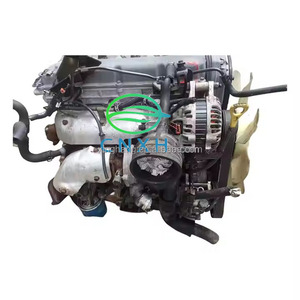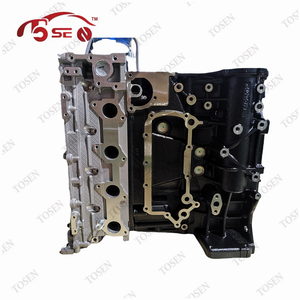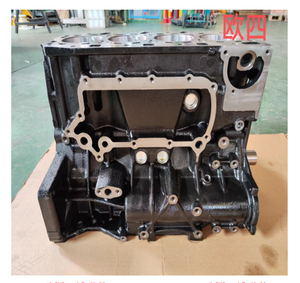(895 products available)
























 Ready to Ship
Ready to Ship





 Ready to Ship
Ready to Ship






 Ready to Ship
Ready to Ship














































 Ready to Ship
Ready to Ship




























































































































 Ready to Ship
Ready to ShipThe Starex D4CB engine is a four-cylinder, in-line, water-cooled diesel engine with a turbocharger and intercooler. It is commonly used in vehicles like the Starex, which is a van model. There are two main types of Starex D4CB engines:
In addition to these two main types, there are also other variants of the D4CB engine that may be used in some Starex models. These variants may have slight differences in specifications and performance depending on the market and local regulations. For example, some variants may have different emissions control systems or tuning parameters to meet the requirements.
Overall, the Starex D4CB engine is a reliable and durable diesel engine that offers good performance and fuel efficiency for van applications. It provides enough power and torque for carrying passengers and cargo. It also has features like common rail fuel injection and turbocharger intercooler that enhance the combustion process and optimize the airflow for better response and efficiency.
The following are specifications of the Starex D4CB engine:
Engine Type:
4-cylinder, in-line turbocharged diesel engine.
Displacement:
2.5 liters (2497 cc).
Power Output:
Common Rail Diesel Technology (CRDi) allows the engine to produce 125 horsepower (93 kW) at 3800 rpm.
Torque:
The engine generates a torque of 392 Nm (289 lb-ft) at 2000 rpm.
Bore x Stroke:
82 mm x 90 mm (3.23 in x 3.54 in).
Compression Ratio:
17.0:1.
Fuel System:
High-pressure direct injection system with a common rail.
Turbocharger:
Variable Geometry Turbocharger (VGT) with Intercooler.
Cooling System:
Liquid cooling system with a thermostat and radiator.
Fuel Type:
Diesel fuel meeting international standards.
Emissions Control:
Emissions control system to comply with environmental regulations.
Maintaining the Starex D4CB engine is crucial for keeping it in good condition and achieving optimal performance and durability. Here are some of the important maintenance practices to follow:
Regular Oil Change:
Engine oil lubricates the moving parts of the engine to reduce friction and wear. It is important to check the oil level regularly and change the engine oil and oil filter at the recommended intervals. This will help remove contaminants and ensure proper lubrication.
Air Filter Replacement:
The air filter prevents dust and debris from entering the engine, which can cause wear and reduce efficiency. Inspect the air filter regularly and replace it if it becomes clogged. This will ensure proper airflow and optimize engine performance.
Fuel Quality:
Use good-quality diesel fuel from reputable sources. Avoid using low-quality fuels or additives that may harm the engine. Adhere to the manufacturer's recommendations regarding fuel quality and any additional requirements.
Regular Servicing:
Take the vehicle for regular maintenance and servicing as recommended by the manufacturer. Qualified mechanics can check and maintain important engine parts, ensuring optimal engine health.
Coolant Level:
The liquid cooling system cools the engine during operation. Check the coolant level regularly and top it up if necessary. Use the recommended coolant type and change it at the recommended intervals to maintain its effectiveness.
Check Belts and Hoses:
Inspect the drive belts and hoses for wear, cracks, or damage. Replace them if necessary to prevent breakdowns. Worn-out belts or hoses can cause engine failure or damage to other components.
Regular Spark Plug Inspection:
Inspect the glow plugs and their connections regularly. Clean or replace them if necessary. Proper spark plug function is important for reliable engine starting and optimal combustion.
Load Management:
Avoid overloading the vehicle beyond its rated capacity. Overloading can strain the engine and reduce its efficiency. Adhere to the manufacturer's recommendations regarding maximum load and towing capacity.
Driving Behavior:
Practice smooth and moderate driving. Avoid sudden acceleration and heavy braking, as this can put extra stress on the engine and its components. Moderate driving helps improve fuel efficiency and reduce wear on the engine.
Check Engine Warning:
If the "Check Engine" light comes on, do not ignore it. Immediately take the vehicle to a qualified mechanic to diagnose and fix any underlying problems. The "Check Engine" light can indicate various issues that need to be addressed promptly to avoid engine damage.
There are several factors to consider when buying parts for the Starex D4CB engine. Here are some of them:
Compatibility
When selecting components for the Starex D4CB engine, it is critical to ensure that they are compatible with the engine's specifications and design. This includes taking into account the engine's displacement, configuration, and other characteristics to ensure that the components fit correctly and work together optimally.
Quality
It is critical to prioritize quality while choosing components for the Starex D4CB engine. High-quality components may have a higher initial cost, but they can improve performance, dependability, and durability. This can reduce the need for frequent replacements, resulting in long-term cost savings.
Warranty and support
When choosing components for the Starex D4CB engine, consider the warranty and support provided by the manufacturer or supplier. A strong warranty can provide peace of mind and protection against defects or failures, while excellent customer support can assist with any problems or questions that arise.
Maintenance
Consider the maintenance requirements of the chosen components for the Starex D4CB engine. Some components may require more frequent maintenance or specialized tools and knowledge to maintain, while others may be designed for low-maintenance operation. Choosing components that are easy to maintain can save time and money in the long run.
Replacing a Starex D4CB engine can be a complex task that typically requires a certain level of mechanical expertise. Here's a general guide on how to replace the Starex D4CB engine.
Preparation
Ensure that the new or refurbished engine to be installed is thoroughly cleaned and inspected. This is to prevent contaminants from entering the engine and causing damage. Gather all necessary tools for the replacement, such as wrenches, sockets, pliers, and engine hoist. Set aside any necessary replacement parts, like gaskets, bolts, and fluids.
Safety Precautions
Disconnect the vehicle's battery to prevent electrical accidents. Lift the vehicle using a jack and secure it with jack stands to ensure safety while working underneath it.
Drain Fluids
Drain all engine fluids, including oil and coolant. This will prevent spills and reduce the weight of the engine during removal.
Disconnecting the Old Engine
Depending on the vehicle design, the Starex D4CB engine may have either a rear or front-mounted layout. Locate and disconnect all electrical connections associated with the engine. Make a note of their locations for easy reconnection later. Disconnect all plumbing connections like the coolant hoses, vacuum lines, and fuel lines. Carefully label these connections to ensure proper reassembly. Locate and remove the exhaust system section connected to the old engine. This may involve removing bolts or using a cutting torch in some cases. The engine is held in place by a series of bolts and brackets attached to the engine bay. Locate and remove these mounts, then use an engine hoist or crane to lift the old engine out of the vehicle.
Installing the New Engine
Position the new engine onto the engine hoist and carefully lower it into the engine bay. Align the engine with the mounting points and secure it using bolts and brackets. Reconnect all electrical, plumbing, and exhaust system connections as disconnected earlier. Ensure all connections are secure to prevent leaks and ensure proper engine function.
Final Steps
Refill the engine oil and coolant. Dispose of the old engine oil and coolant per local regulations. Start the engine and allow it to run for a few minutes. Check for leaks or unusual noises. Perform a final inspection to ensure all tools and components are reinstalled and the engine bay is clean.
Q1: Can the Starex D4CB engine be used in any other vehicle apart from the Hyundai Starex?
A1: The Starex D4CB engine can be used in other vehicles apart from the Hyundai Starex. However, modifications may be needed to make it fit in other car models.
Q2: Is the Starex D4CB engine a petrol engine or a diesel engine?
A2: The Starex D4CB engine is a diesel engine. It is known for its fuel efficiency and durability, making it a popular choice for commercial vehicles and trucks.
Q3: What is the common problem of the Starex D4CB engine?
A3: The common problem with the Starex D4CB engine is related to its fuel system. Over time, the fuel injectors may become clogged or deteriorate, leading to rough idling, decreased power, and increased emissions. This can be exacerbated by using low-quality fuel or not changing the fuel filter regularly.
Other issues include egr valve blockage, turbocharger failure, and timing belt replacement.
Q4: How can users get spare parts for the Starex D4CB engine?
A4: To get spare parts for the Starex D4CB engine, users can contact their authorized Hyundai service center or visit the Hyundai Motor Company website. They can also find spare parts from local auto parts stores or online marketplaces such as Alibaba.com.
Q5: What is the Emission standard of the Starex D4CB engine?
A5: The Starex D4CB engine meets Euro 4 emission standards. This means it was designed to reduce harmful emissions and contribute to cleaner air.